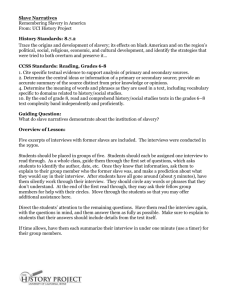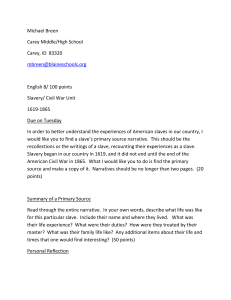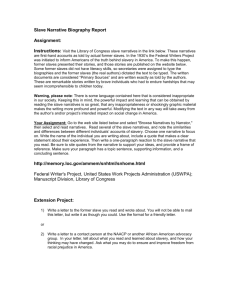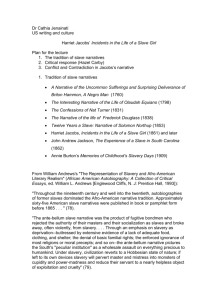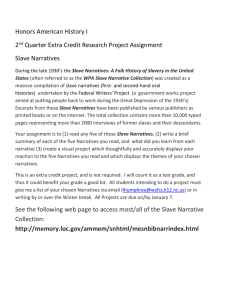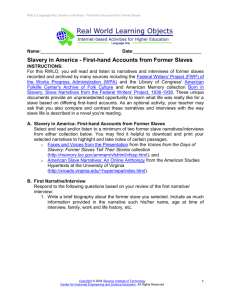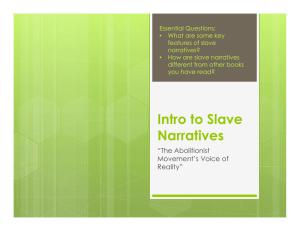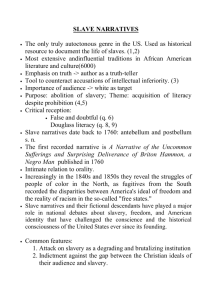The Slave Narrative
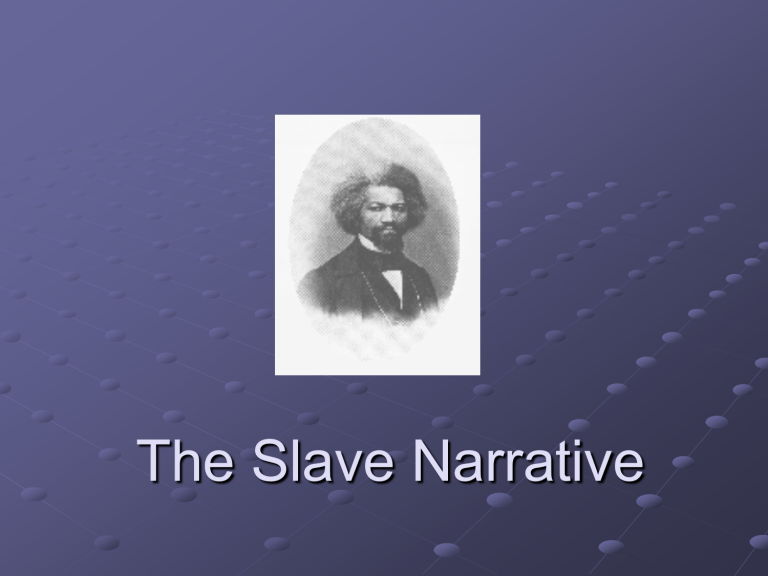
The Slave Narrative
Definition
Narratives of slavery recounted the personal experiences of ante-bellum
African Americans who had escaped from slavery and found their way to safety in the
North.
Elements of Slave Narratives
narratives drew on Biblical allusion and imagery the rhetoric of abolitionism the traditions of the captivity narrative spiritual autobiography in appealing to their (often white) audiences
Some of these narratives bore a "frame" or preface attesting to their authenticity and to the sufferings described within.
Elements of Slave Narratives
Many Included a picture of themselves
Paperwork of sale
The ante-bellum slave narrative was the product of fugitive bondmen who rejected the authority of their masters and their socialization as slaves and broke away, often violently, from slavery
Elements of Slave Narratives
emphasis on slavery as deprivation –
-lack of adequate food
-clothing
-shelter
-denial of basic familial rights
-
-enforced ignorance of most religions or moral precepts
Purpose
Attempted to arouse the sympathy of readers in order to promote humanitarianism.
Emphasized traditional Christian religious ideas.
Showed acceptance of the ideals of the dominant white society
Emphasized the cruelty of individual slave owners.
Influences
King James Bible
New England sermonizing traditions
Rhetoric and aims of abolitionist orators
Devotional books like Pilgrim's Progress.
Influences
Lurid scenes of horror and violence that served as an acceptable gratification of the popular appetite for sensationalism.
Religious influence: didactic content
Interesting descriptions of life in the South
Propaganda weapons during abolition and
Civil War
Outcomes
Descent from state of innocence or peace into recognition of status (slavery)
Progressive dehumanization at hands of masters and concomitant growth of self-reliance and decision-making, sometimes involving literacy
A spiritual "bottoming-out"
Resolve; for Douglass, the fight with Covey
Flight and redemption
Messages
Exposes physical and emotional abuses of slavery: scenes of whipping, sexual abuse, starvation, especially of women or children
Exposes (sometimes satirically) white owners' hypocrisy and inconstancy
Describes repeated raising of narrator's expectations only to have them dashed by whites
Messages
Describes quest for literacy
Describes quest for freedom
Includes vignettes of other character types and the experience of slavery: those who succeed and those who fail
Makes overt appeals to imagined audience
Details loss of significant family member(s) and the destruction of family ties
